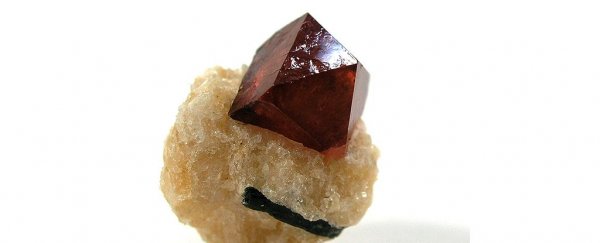Tiny crystals of zircon dated to 3.8 billion years ago contain the earliest geochemical evidence yet for plate tectonic activity here on Earth.
Isotopes and trace elements preserved in the crystals show evidence that they formed under subduction conditions – when the edge of one tectonic plate slips beneath the edge of the adjacent plate, creating specific conditions. This provides new constraints on when plate tectonics emerged on Earth.
Because plate tectonics played a key role in creating the conditions for life on Earth, altering the compositions of the oceans and atmosphere, understanding when and how they emerged is also important for understanding how we got here, and what makes a planet habitable.
Understanding the geology of early Earth is something of a challenge. The crust of our world has been pretty dynamic over its 4.6-billion-year history, and the only direct record of the Hadean eon – between 4.6 and 4 billion years ago – can be found in crystals of the mineral zircon.
These crystals seem to survive the ravages of time but rarely: just 12 locations on Earth have yielded the ancient grains, three or fewer in most locations.
Recently, however, a team of geologists unearthed an amazing treasure. A chronological series of 33 microscopic zircon crystals, dating from 4.15 to 3.3 billion years ago, was found in an ancient block of Earth's crust found in the Barberton Greenstone Belt in South Africa.
The series provided a rare opportunity to probe the changing conditions of early Earth, from the Hadean through the Eoarchaeon era, which ran from 4 to 3.6 billion years ago.
Mineral crystals can act as a sort of time capsule that contains information about the conditions in which they formed, and zircon crystals in particular can be extremely valuable for this scientific purpose. Isotopes of the metal hafnium and trace elements found in zircon can be used to make inferences about the rocks from which they crystallized.
A team of scientists led by geologist Nadja Drabon of Harvard University studied the Greenstone Belt zircons to reconstruct a timeline of the conditions under which they formed. They found that from about 3.8 billion years ago onwards, the crystals had hafnium and trace element signatures similar to modern rocks formed in subduction zones – at the edges of tectonic plates.
This suggests that plate tectonics were active at the time those crystals formed, the researchers said.
"When I say plate tectonics, I'm specifically referring to an arc setting, when one plate goes under another and you have all that volcanism – think of the Andes, for example, and the Ring of Fire," Drabon said.
"At 3.8 billion years [ago] there is a dramatic shift where the crust is destabilized, we have new rocks forming and we see geochemical signatures becoming more and more similar to what we see in modern plate tectonics."
Fascinatingly, zircon crystals older than that 3.8 billion-year cut-off were not formed in a subduction zone setting, but likely crystallized in a Hadean "protocrust" that formed from remelted mantle material, before the mantle was depleted of basaltic melt elements by tectonic processes.
The team then compared their findings to zircon crystals dating to around the same time from around the world to make sure they weren't just observing a localized phenomenon. These other zircons showed similar transitions.
It's difficult to know exactly if the tiny grains all point to the evolution of our world towards plate tectonics, but the results definitely suggest that a global change was occurring.
"We see evidence for a significant change on the Earth around 3.8 to 3.6 billion years ago and evolution toward plate tectonics is one clear possibility," Drabon said.
"The record we have for the earliest Earth is really limited, but just seeing a similar transition in so many different places makes it really feasible that it might have been a global change in crustal processes. Some kind of reorganization was happening on Earth."
The research has been published in AGU Advances.
